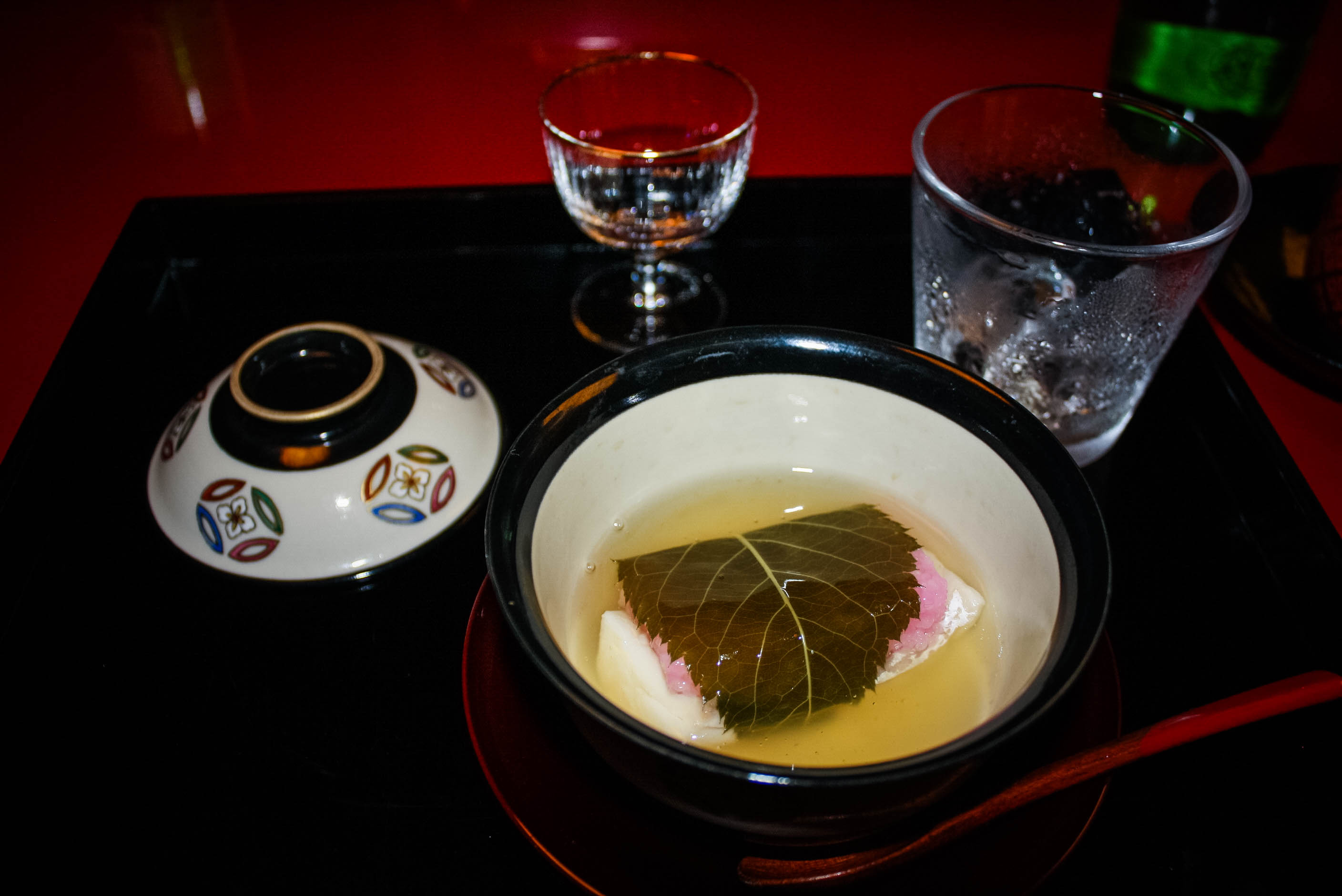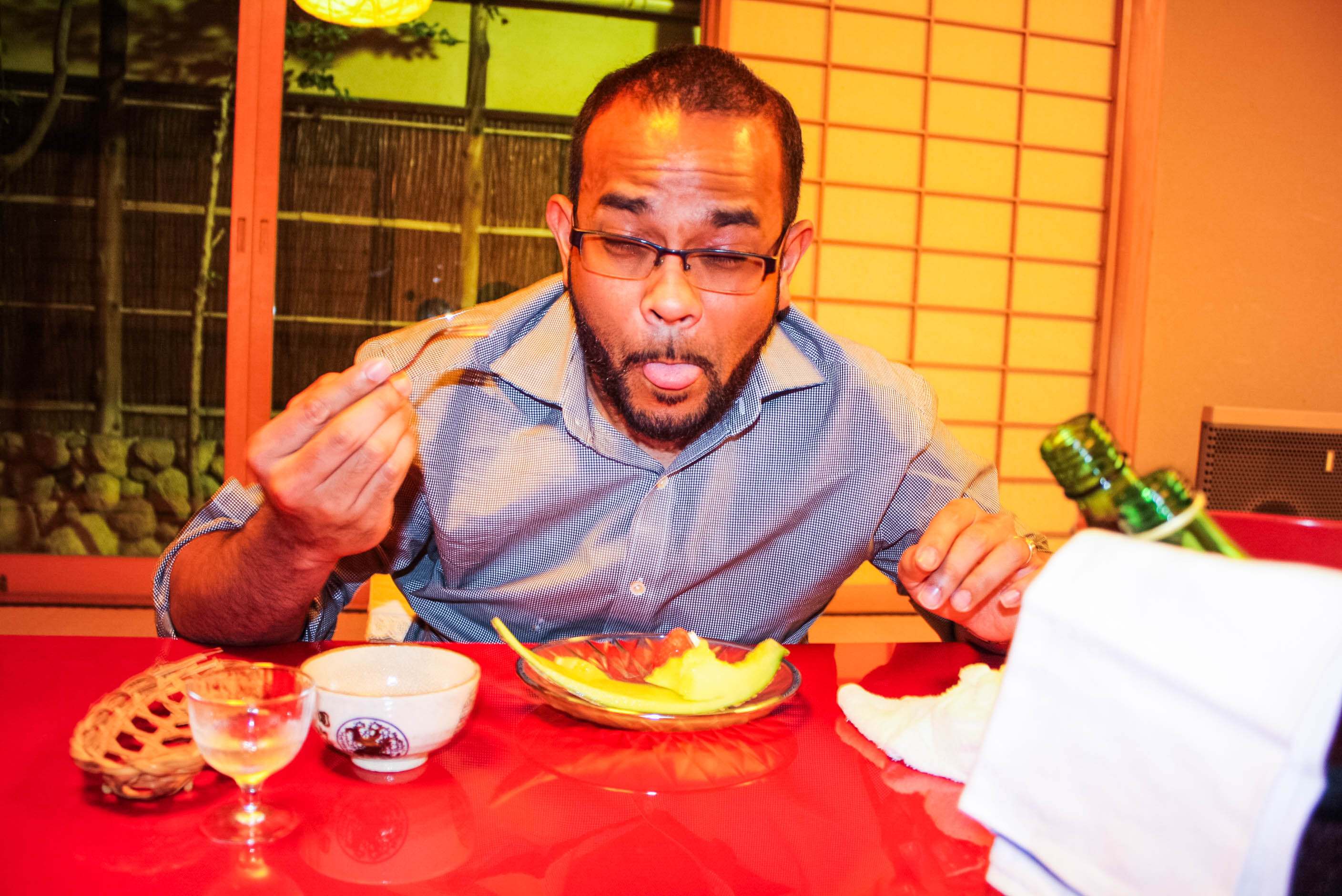Honeymooners: Traditional Tea Ceremony and Traditional Japanese Meal

After visiting Fushimi-Inari, we made our way back to the hotel to get ready for a traditional tea ceremony. It was downtown and near rush hour, so we were able to see the hustle and bustle of the city on our way.
The woman, dressed in Kimono, was so sweet as she taught us all about the matcha. There were many women throughout the city dressed in kimono, and Mark and I were somewhat confused by this. Though there were places for tourists to rent kimono, get make-up done, and take photos, and many domestic tourists could be seen in the traditional dress, we also saw older women wearing kimono on the subway.
As it turns out, it is because Kyoto is the cultural mecca of the nation that it is the city in which many can still be seen wearing traditional dress. There is several occasions in which it would be appropriate to wear kimono.
I digress. Back to tea ceremony:
I’m really big on taking time out to enjoy a good cup of green tea, and this was unlike any I’ve had in the states. I just had to buy a set before we left, and I look forward to practicing some of the ritual at home, it is a very meditative practice, and truly honors the beauty of tea and the utensils used to enjoy it.
We had plenty of time left between tea ceremony and our traditional Japanese meal, or kaiseki–ryōri, so we did a bit of exploring and found ourselves at a mall. It wasn’t long before I realized that the mall was just an old street that, about 30 years ago or so, had a covering placed on top to integrate it as one cohesive (and rainproof) shopping area. At the end of the street, the mall was directly next to a temple.
This is one of my top ten favorite photos from Kyoto, because it embodies the harmony between modern life and traditional worship that is seen throughout the city.
After shopping, we dropped off our stuff at the hotel and grabbed a taxi to get to our kaiseki-ryōri dinner.
Kaiseki is a traditional Japanese meal that consists of ten to eleven small courses. The menu is preset, and when you make a reservation they asked which level of quality we would like, which, of course, determined the price. We chose the mid-grade scale, which ran us about $160/person, without tip. This was the single time during our trip to Japan in which we were expected to pay gratuity. In every other case, it is considered an insult to the quality of the person’s job: it’s as if you’re saying their employer doesn’t pay them enough.
They asked ahead of time which grade we would prefer, because they go to the market and get the food that day. So don’t expect to be able to change your mind when you arrive!
When we arrived we were greeted by a gentleman who showed us that we were to remove our shoes before entering the building. Our host then showed us to our table room wing of the restaurant.
It was in what seemed to be the back of the restaurant, but the seating situation was so secluded that we never saw any other part or any other patrons. She took us down a hallway and opened a door to a much smaller hallway. On the left there was a window to a secluded outdoor zen garden, with the door to our private bathroom across, and directly in front of us was the paper screen door to the room that held our dining table.
As you may already know, Japanese meals were traditionally eaten at a low table while guests sit on the floor with small cushions. However, the dinner–and its eleven courses–take between three and four hours to complete. Many people find it uncomfortable sitting on the floor for that long. The modern remedy: a low table, but with the floor lowered beneath it in such a way that people are able to sit as if they are in a chair. Eureka!
I don’t think I could ever be a travel food blogger, because I cringe thinking about taking pictures in the middle of the restaurant dining room. But since this was so private (!) I tried to take a picture of every dish. Sometimes my appetite got the best of me, so I might’ve missed one or two.

This was the first dish. I know for sure because those light pink things all had eyes and reminded me of worms. I think they were actually a type of shelled shrimp, but it was still a scary way to start the meal.
I stopped labeling the food in the captions because honestly, in some cases your guess is as good as mine. Our host spoke very little English, but it added to the ambiance. I’ve found that you don’t have to know what something is to know if it’s delicious or not, and the same rang true in this case.
Well, most of the time.
















[…] traditional tea ceremony and kaiseki, or traditional Japanese dinner, I was slamming down matcha like it was nobody’s business. I ended up wired & blogging […]
[…] More @ tinykelsie.com […]